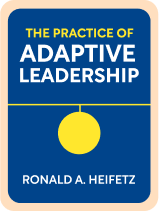

This article is an excerpt from the Shortform book guide to "The Practice of Adaptive Leadership" by Ronald A. Heifetz. Shortform has the world's best summaries and analyses of books you should be reading.
Like this article? Sign up for a free trial here .
How does stress affect leadership? Has stress ever affected your ability to lead effectively?
The stress that leaders are put under can easily result in a lack of focus and impulsive decisions. Therefore, it’s very important to take care of yourself as a leader—if you burn out, you’ll no longer be able to lead, and this could derail all progress towards your purpose.
The following self-care techniques are taken from The Practice of Adaptive Leadership written by leadership experts Alexander Grashow, Marty Linsky, and Ronald Heifetz.
Thriving Techniques
Here are some techniques for thriving. All of them involve building a support network of relationships with people unrelated to your adaptive challenge.
Technique #1: Recruit Confidants
The first technique is to recruit family members, friends, community members, advisors, or therapists as confidants to support you. (You should have several confidants so that none of them is excessively burdened.) They provide the following support:
- Reminding you why you’re tackling adaptive challenges
- Helping you remain separate from your role and not take things personally
- Sharing your emotional burden
- Congratulating you when you’re doing well and warning you when you’re self-sabotaging
- Satisfying your needs
For your confidants to be able to help you, you need to be open with them about your vulnerabilities (for example, if you crave being liked, tell them, even if you don’t think it reflects well on yourself). If you find this very difficult, start small by sharing a less sensitive vulnerability.
Technique #2: Meet Your Needs Outside of Work
The second technique is to look beyond work for affirmation, love, and influence. We crave these three hungers more when we’re stressed (like when we’re addressing adaptive challenges, which are inherently stressful). If you can satisfy these hungers outside of work, they won’t get in your way when you’re at work.
- For example, if you get affirmation from your family, you won’t need to try to get it from your coworkers. If you became reliant on their affirmation, they would have power over you.
Technique #3: Join Multiple Communities
The third technique is to join communities (for instance, a hobby group or a religious community). This is an effective method of self-care for leaders because:
- It creates boundaries between work and your personal life. Leadership is a massive, perpetually unfinished effort. If you don’t have other things to do besides it, it might consume you.
- It helps you learn new skills you can translate to solving your leadership challenges.
Technique #4: Take Care of Your Body
The next technique is to take care of yourself physically. While you might not feel the physical effects of stress (inherent to adaptive challenges) while you’re fuelled with purpose and in the middle of an intervention, it’s still weighing on you. Stressful moments are when it’s most important to exercise, sleep, and eat well.
Technique #5: Create Safe Spaces (Physical or Mental)
The fifth technique is to regularly get some distance from the conflicts and pressures of an adaptive challenge. You might go for a walk or spend some time meditating, whatever works for you. In this time and space, reflect on what’s happened recently, assess your triggers and hungers, remind yourself of your purposes, and try to see the big picture.
Technique #6: Use Renewal Practices
The final technique is renewal—recovering from difficult experiences and reconnecting with your values and purposes. Renewal will help you thrive as you tackle adaptive change.
There are three ways to renew yourself:
1. Find multiple sources of meaning. Don’t just look for meaning in your work—adaptive change is dangerous and threatening, and if something goes wrong, you’ll lose all your meaning. Find it in your personal life too, for example, in your relationship with your best friend.
2. Find satisfaction in small things. Every day you’ll get opportunities to complete small steps toward adaptation. Take heart from these victorious moments.
3. Temper your realism and optimism. Realism has the potential to turn into cynicism, and optimism into delusion. To keep these factors in check, hold them both at the same time. To do this:
- Remember that the current conditions aren’t permanent—things can always get better.
- Reflect realistically on your work and keep learning.
- Look for opportunities to contribute to others every day.

———End of Preview———
Like what you just read? Read the rest of the world's best book summary and analysis of Ronald A. Heifetz's "The Practice of Adaptive Leadership" at Shortform .
Here's what you'll find in our full The Practice of Adaptive Leadership summary :
- How to deal with unknown solutions that require innovation, experimentation, and adaptation
- How to determine if a problem is technical or adaptive
- Five tips for launching initiatives to address adaptive challenges






